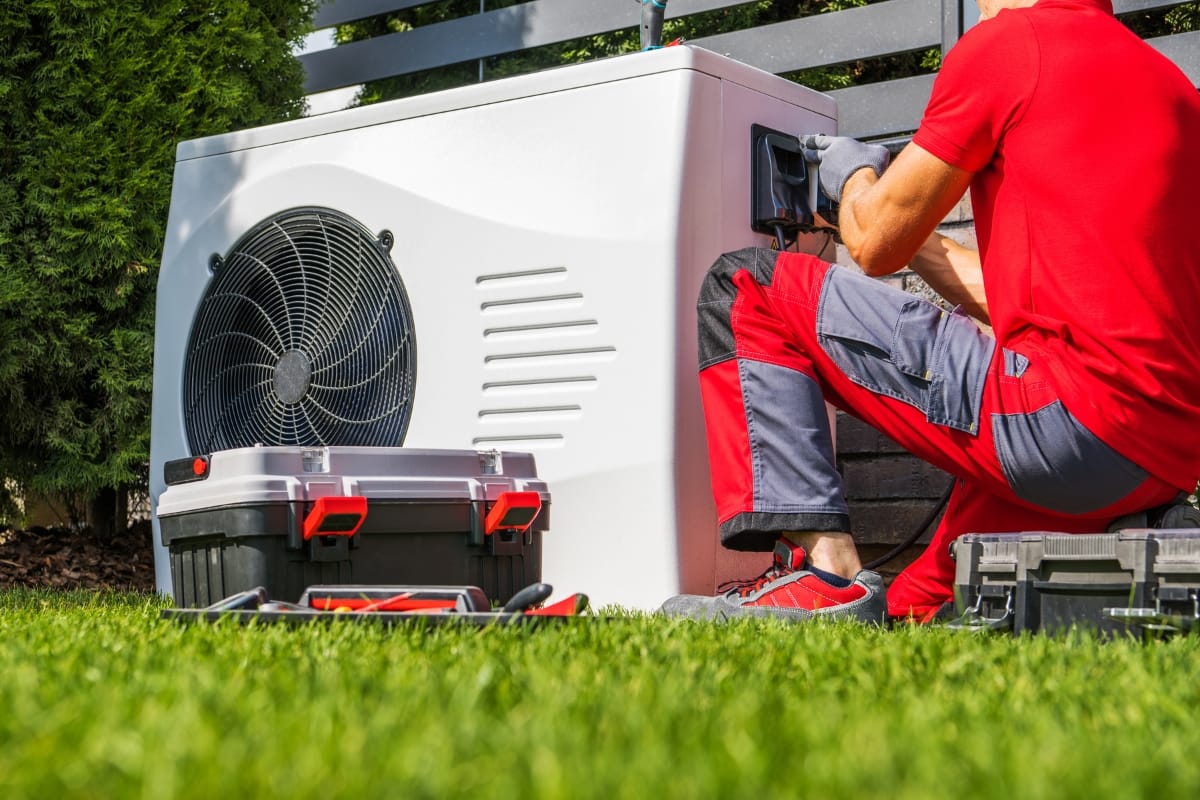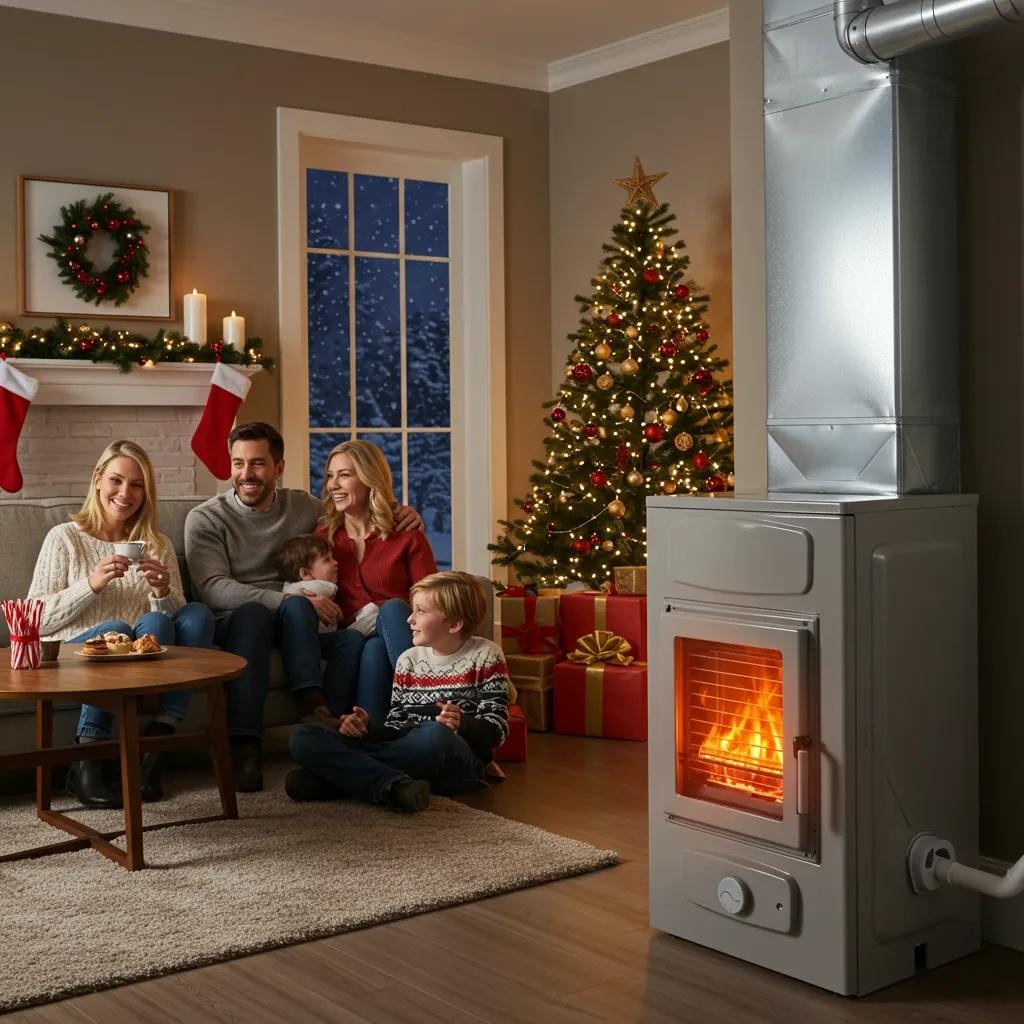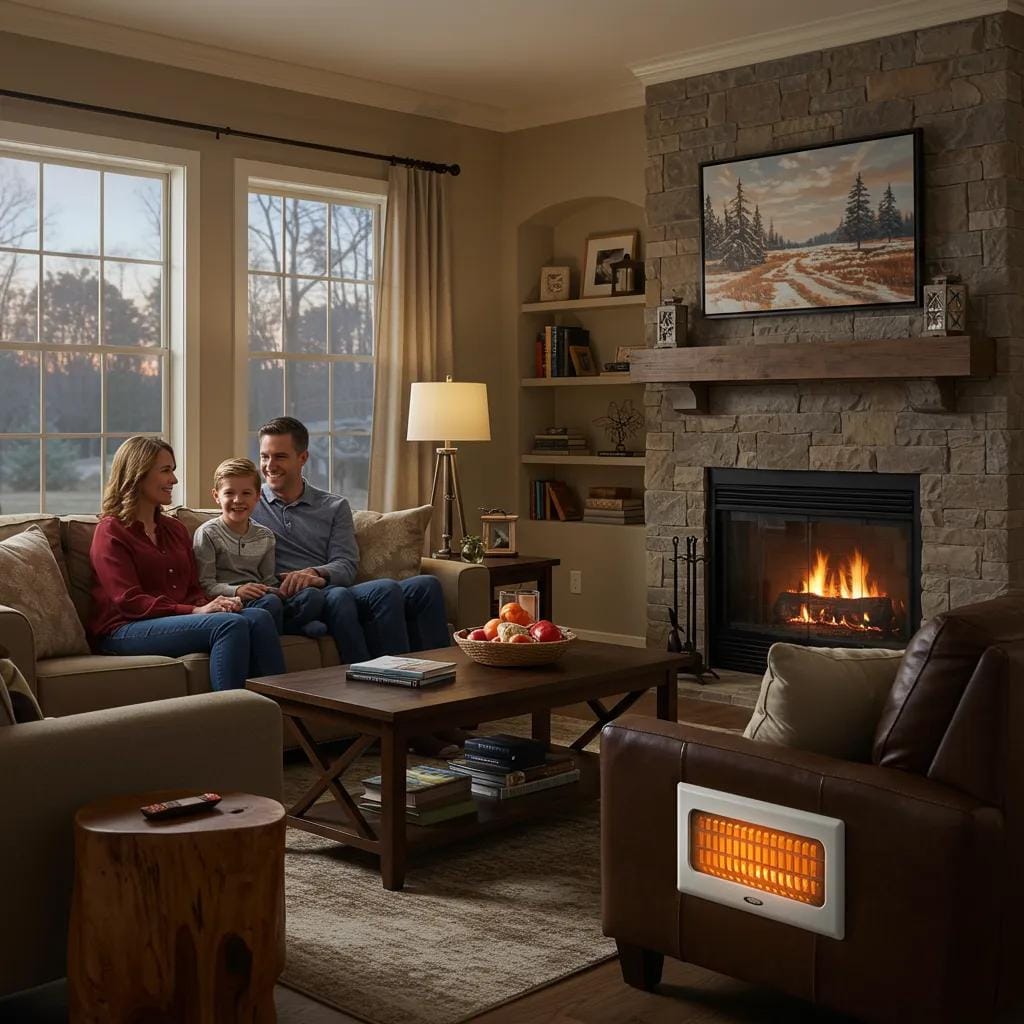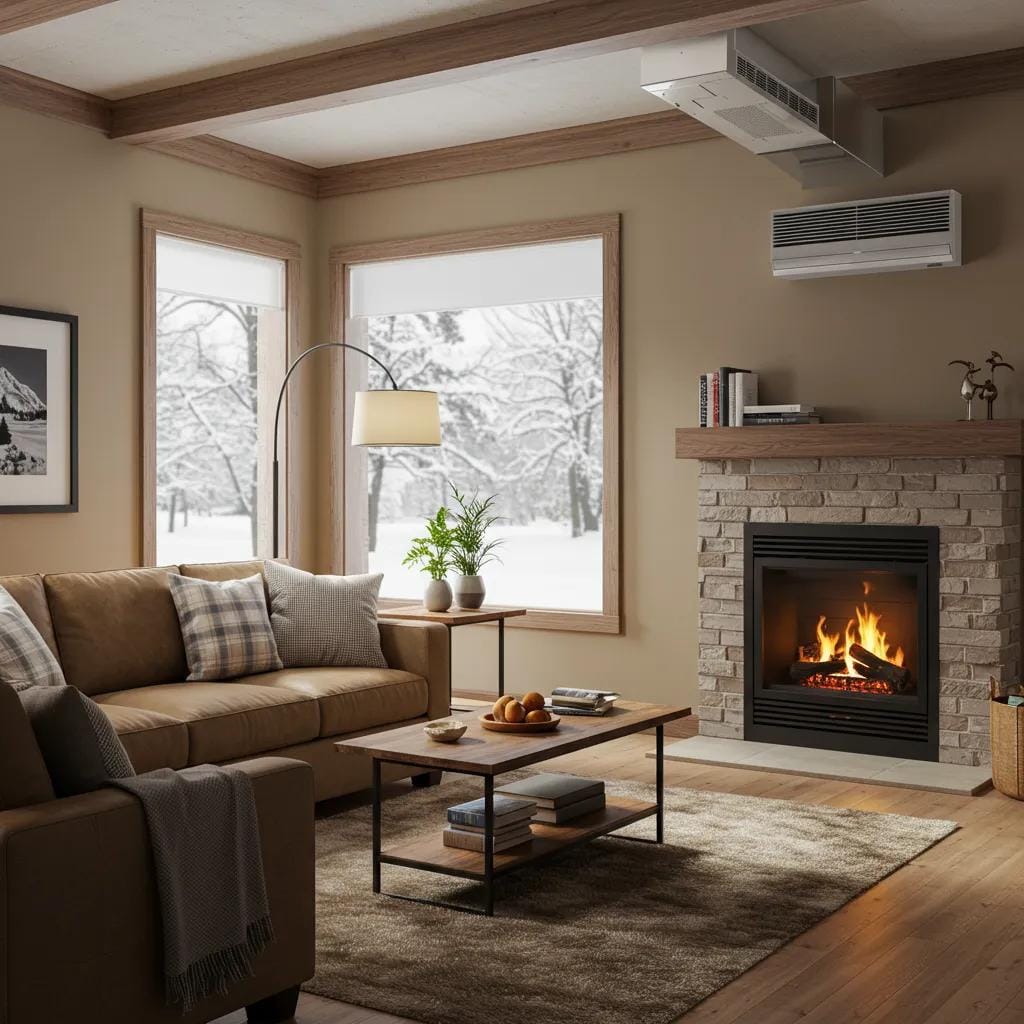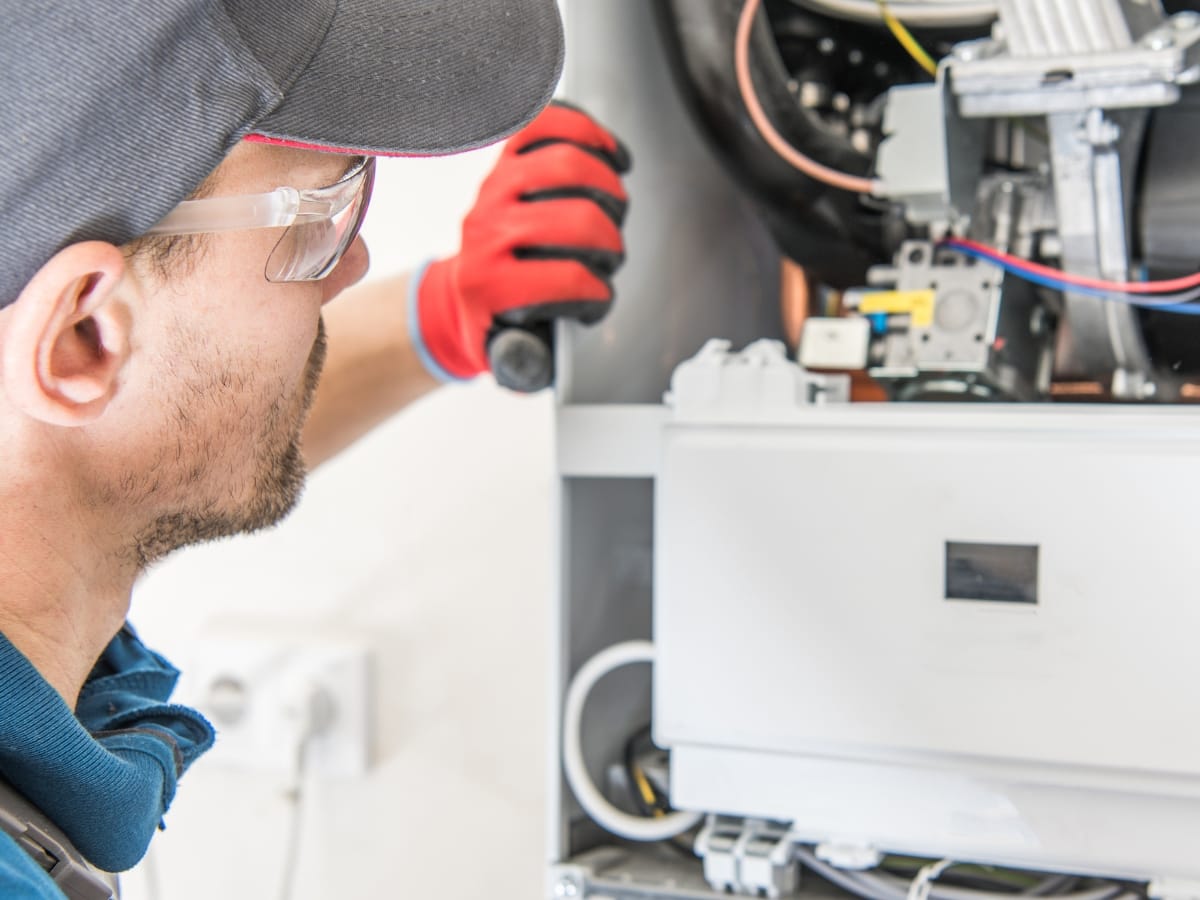Keeping your home comfortable throughout Woodstock’s shifting seasons requires more than just a basic HVAC system—it demands a smart, reliable approach to year-round climate control. From sweltering summers to chilly winter nights, all-season heating and cooling systems ensure consistent indoor comfort, energy efficiency, and long-term savings. In this guide, we’ll explore the best solutions available for Woodstock residents, including energy-efficient upgrades, system maintenance tips, and expert insights to help you create a cozy, cost-effective living environment no matter the forecast.
How All-Season Heating & Cooling Keeps Woodstock Comfortable Daily
What Are the Best All-Season Heating & Cooling Systems for Woodstock Homes?
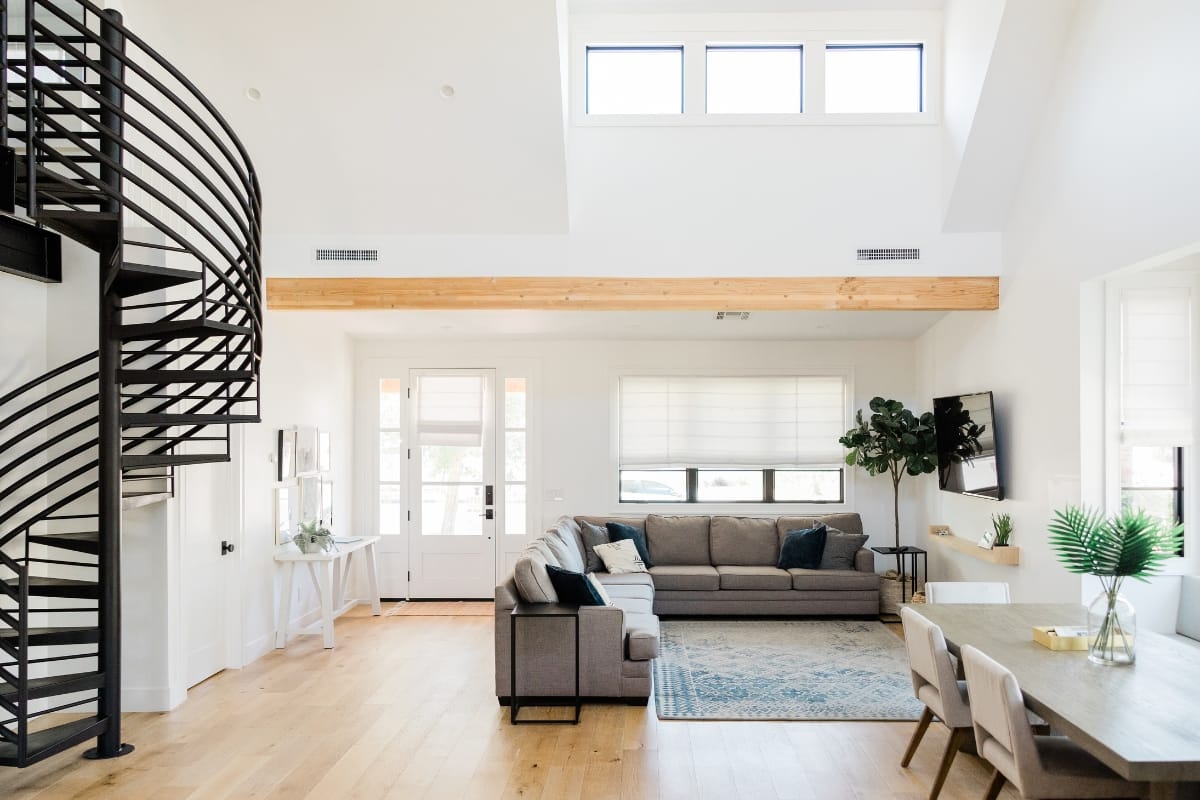
Homes in Woodstock need heating and cooling systems that can handle changing temperatures throughout the year. Whether it’s the chill of winter or the heat of summer, systems that offer reliable performance in every season are essential. The best solutions are those that combine energy efficiency, comfort, and low maintenance. Homeowners are increasingly turning to equipment that can manage both heating and cooling from a single unit, especially those that help reduce energy usage without sacrificing indoor comfort.
How Do Heat Pumps Provide Efficient Year-Round Comfort?
Heat pumps are one of the most efficient ways to heat and cool a home using a single system. Unlike traditional setups that separate heating and air conditioning functions, heat pumps reverse the flow of refrigerant to either extract heat from outdoor air during colder months or remove heat from indoor spaces during warmer ones. Even when outdoor temperatures dip, many modern heat pumps can still find and transfer enough heat to warm a home effectively.
Advanced models often include variable-speed compressors, which help maintain a consistent indoor temperature without frequent cycling. When paired with programmable or smart thermostats, heat pumps can automatically adjust settings to match the household’s schedule, keeping energy use low while maintaining comfort. Routine maintenance—like inspecting refrigerant levels, cleaning filters, and checking electrical connections—is important for keeping the system running smoothly. With proper care, a heat pump can serve as a long-term, efficient option for homes in Woodstock’s moderate climate.
What Are the Benefits of Furnaces and Boilers in Woodstock’s Climate?
For homes that experience especially cold winters, furnaces and boilers remain reliable heating options. Furnaces generate warm air and push it through ductwork, while boilers circulate heated water or steam through pipes and radiators. Each system has strengths, but both offer the ability to quickly and thoroughly warm large living areas.
Many modern furnaces and boilers have efficiency ratings above 90 percent, meaning they convert most of their fuel into usable heat. High-efficiency models often include features like modulating burners or variable-speed blowers, which allow them to adjust output based on the home’s current needs. These features help prevent temperature swings and cut down on wasted energy.
For older homes without existing ductwork, boilers can be particularly appealing. Some systems also work well with radiant floor heating, which can improve comfort in spaces where duct installation is difficult or impractical. While furnaces and boilers require regular upkeep, including filter changes, annual inspections, and ventilation checks, they tend to have long lifespans when properly maintained.
Are Central Air Conditioners or Mini-Splits Better for Summer Cooling?
During the warmer months, both central air conditioners and ductless mini-split systems offer effective cooling, but they serve different needs. Central AC systems are best suited for cooling an entire home evenly. They use ducts to move cooled air throughout the house and often come with energy-saving features like two-stage compressors or inverter-driven motors. These technologies help reduce electricity use by matching output to the temperature demand, rather than turning on and off repeatedly.
Mini-split systems provide a more flexible solution, especially for homes without existing ducts or for additions where installing ducts would be difficult or expensive. These systems allow homeowners to cool specific rooms or zones, making them a cost-effective option for households where some rooms are used more than others. They also tend to be quieter and more efficient because they avoid the energy loss associated with ducts.
Both central and ductless systems can be paired with smart thermostats, allowing homeowners to schedule cooling based on occupancy patterns or outside temperatures. This helps avoid overcooling and contributes to lower monthly energy bills.
How Can Woodstock Residents Improve Indoor Air Quality Year-Round?
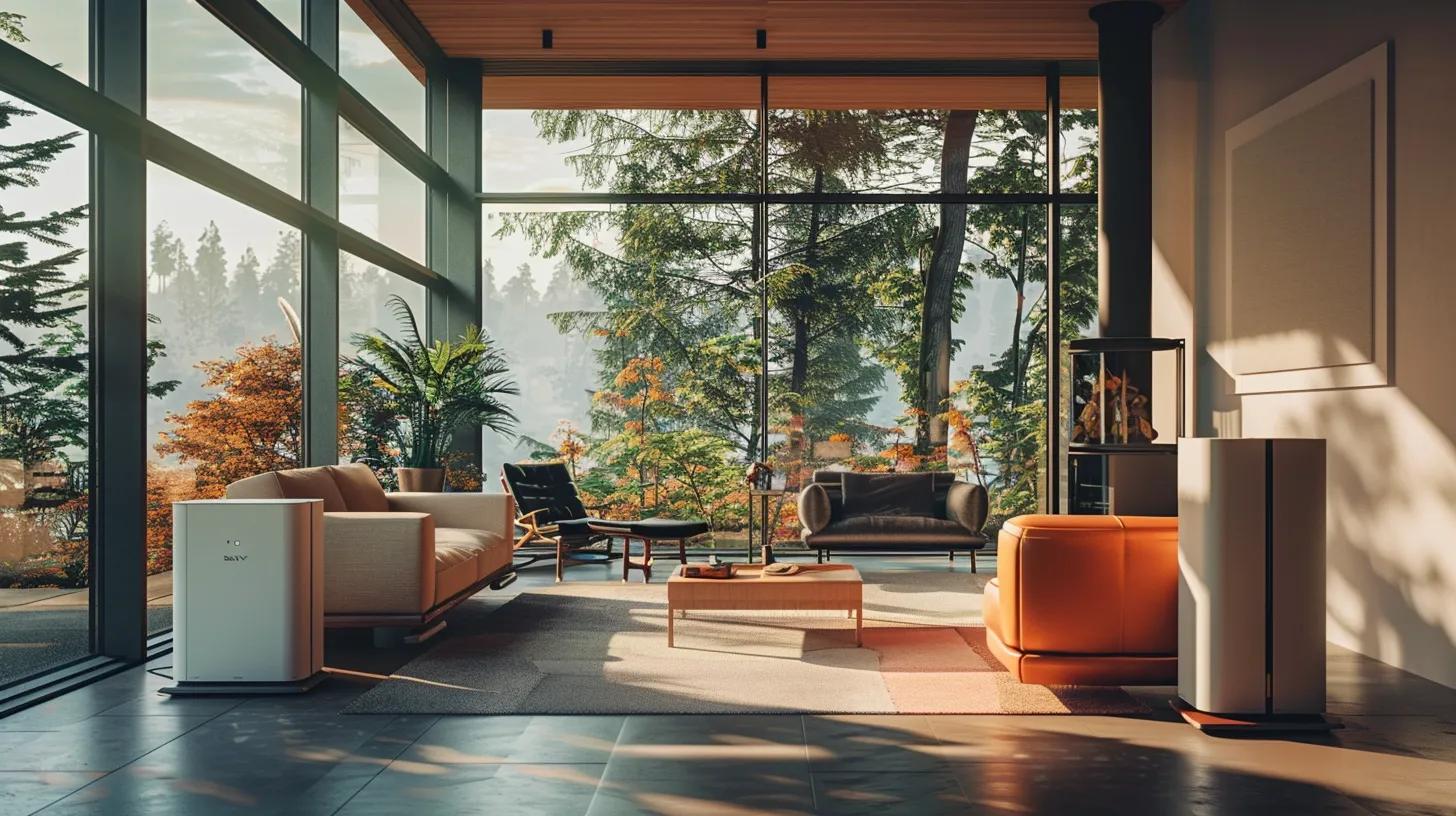
Indoor air quality plays a critical role in maintaining a healthy and comfortable home. For residents in Woodstock, paying attention to air quality helps reduce exposure to allergens, supports respiratory health, and contributes to the overall effectiveness of heating and cooling systems. While outdoor conditions change with the seasons, creating a clean indoor environment requires consistent attention throughout the year.
Common household activities, such as cooking, cleaning, or even using certain types of furniture and flooring, can release particles into the air. When not properly addressed, these particles can accumulate and affect both health and comfort. Maintaining good indoor air quality involves more than just addressing dust—it includes managing moisture, improving ventilation, and filtering out airborne pollutants.
What Are the Advantages of Air Purifiers, Humidifiers, and Dehumidifiers?
Air purifiers can play a significant role in reducing indoor pollution. Many models use HEPA filters, which are capable of capturing a large percentage of airborne particles, including dust, pollen, and pet dander. This can be especially helpful for individuals with allergies or respiratory sensitivities. Purifiers are most effective when used consistently and maintained according to the manufacturer’s instructions.
Humidity control is another important factor. During the winter, indoor air can become too dry, especially when heating systems are in constant use. Low humidity can lead to dry skin, irritated sinuses, and increased susceptibility to colds. In these cases, humidifiers help maintain comfortable moisture levels.
In contrast, the summer months in Woodstock often bring high humidity levels. Too much moisture in the air can create a breeding ground for mold and mildew. Dehumidifiers help reduce excess humidity, making the air feel cooler and more comfortable. They also help protect building materials and furniture from moisture damage.
Modern air quality devices often come with sensors that automatically adjust performance based on the room’s conditions. These features allow for more consistent air quality without constant manual adjustments. However, no matter how advanced the device, routine cleaning and filter replacement are essential to keep the systems working as intended.
How Does Proper Ventilation Enhance Comfort and Health?
Ventilation is a key factor in maintaining indoor air quality. Bringing in fresh air from outside helps dilute pollutants and prevents the buildup of carbon dioxide, moisture, and chemical vapors. Without adequate ventilation, indoor air becomes stale and can lead to discomfort or even health concerns over time.
Homes that are sealed tightly for energy efficiency often struggle with poor air exchange. Ventilation systems such as energy recovery ventilators (ERVs) and heat recovery ventilators (HRVs) are designed to solve this issue. They introduce outside air while maintaining indoor temperatures, reducing energy loss. These systems are especially useful in climates like Woodstock’s, where seasons fluctuate between cold, dry winters and hot, humid summers.
Ventilation also plays a role in reducing indoor humidity, helping to prevent mold and bacterial growth. Consistent air movement discourages moisture from collecting in corners or poorly ventilated areas like basements and bathrooms. For homes with HVAC systems, keeping ductwork clean and ensuring filters are changed regularly contributes to better airflow and improved air quality.
In combination with filtration and humidity control, proper ventilation helps maintain a balanced indoor environment. The result is air that feels fresher and is safer to breathe, which benefits everyone in the household. Over time, these improvements can also reduce strain on HVAC systems, as clean air and balanced humidity make it easier for equipment to maintain desired temperatures.
Why Is Energy Efficiency Important for All-Season HVAC Solutions in Woodstock?

Energy efficiency plays a key role in keeping heating and cooling costs under control, especially in areas like Woodstock where seasonal temperature changes are significant. Efficient HVAC systems do more than maintain indoor comfort; they also help reduce energy waste and environmental impact. With rising energy prices and growing awareness of sustainability, more homeowners are turning to systems that offer reliable performance while using less power.
Woodstock’s seasonal weather patterns can place a heavy demand on HVAC equipment. Winters tend to be chilly and damp, while summers are hot and humid. Systems that can adjust their performance to match the outdoor climate and indoor usage patterns are better suited to handle these shifts without wasting energy. Investing in equipment with strong energy ratings and automation features not only improves comfort but also leads to long-term savings.
How Do Energy-Efficient Systems Reduce Utility Bills?
Modern HVAC systems reduce energy costs by using technology that adjusts their performance based on real-time demand. This includes features like variable-speed compressors and advanced sensors that help the system operate more precisely, rather than running at full capacity all the time. For example, a system with a high Seasonal Energy Efficiency Ratio (SEER) uses less electricity to deliver the same amount of cooling compared to older models.
Programmable and smart thermostats allow homeowners to customize heating and cooling schedules based on when the home is occupied. When used correctly, these settings can reduce unnecessary system use during the day or at night, leading to measurable savings. Studies have shown that homeowners can save around 10 to 15 percent on energy costs just by managing thermostat settings wisely.
In addition to smart controls, other features like energy recovery ventilators can help retain heating or cooling from air that would otherwise be lost. These ventilators capture the temperature from outgoing air and use it to pre-condition incoming air, reducing the energy needed to adjust indoor temperatures. This type of energy conservation adds up over time, especially in homes with larger square footage or higher occupancy.
What Are the Best Practices for Maintaining Energy Efficiency Year-Round?
Consistent maintenance is essential to keep any HVAC system operating efficiently. Seasonal checkups ensure that filters are clean, moving parts are in good condition, and refrigerant levels are correct. Ideally, inspections should be scheduled before the hottest and coldest months of the year so the system is ready for increased demand.
Keeping filters clean is one of the simplest ways to maintain airflow and avoid strain on the system. Clogged filters force equipment to work harder, which increases energy use and shortens its lifespan. Ductwork should also be inspected periodically for leaks or blockages that could reduce the effectiveness of the system.
Other long-term strategies include installing smart thermostats, sealing leaks around windows and doors, and using energy monitoring tools. These tools help homeowners track energy usage and identify patterns that may indicate inefficiency. Some homeowners also explore solar panel installations as a way to reduce reliance on traditional energy sources.
How Does Woodstock Comfort Solutions Tailor Energy Solutions to Local Climate?
Because Woodstock has both cold winters and humid summers, HVAC systems need to be versatile and durable. Systems that can respond quickly to temperature changes without running at full power all the time are best suited for this climate. This kind of responsiveness not only improves comfort but also reduces wear and tear on the equipment.
HVAC performance can be improved further when system design considers local factors such as home insulation, sun exposure, and ventilation patterns. Tailoring system specifications to match these elements can prevent overuse and support even temperature control throughout the home.
When homeowners focus on energy efficiency, they gain more than lower bills. They also get a more consistent and comfortable living space, improved air quality, and a reduced carbon footprint. In a region like Woodstock, where the weather can shift dramatically between seasons, those benefits make a lasting difference.
What Maintenance Plans Ensure Reliable Year-Round Heating & Cooling Performance?
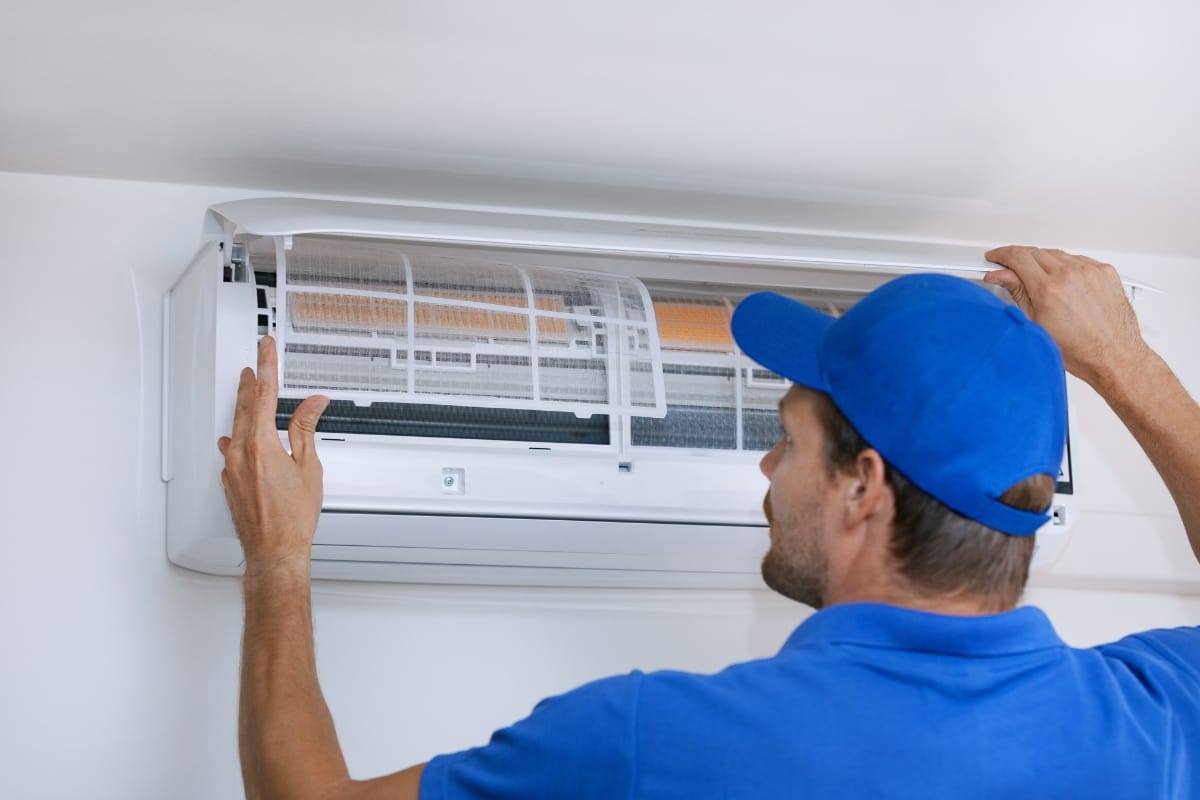
Consistent HVAC maintenance is the key to keeping heating and cooling systems running smoothly all year. A solid maintenance plan helps prevent breakdowns, improves energy efficiency, and extends the lifespan of the equipment. These plans typically include regular inspections, seasonal tune-ups, and the identification of potential problems before they become expensive repairs.
How Often Should HVAC Systems Be Serviced in Woodstock?
In general, HVAC systems should be inspected and serviced twice a year. One visit should take place in the spring before the summer heat arrives, and the second should be in the fall before colder temperatures set in. These seasonal checkups are especially important in Woodstock, where weather patterns shift dramatically and HVAC systems often work harder than in milder climates. For older units or homes with high usage, more frequent checkups may be necessary. Routine service helps catch worn parts early, reduces strain on the system, and ensures it continues to run as efficiently as possible.
What Are the Key Components of Preventative HVAC Maintenance?
Preventive maintenance focuses on keeping the system clean, safe, and working efficiently. This usually includes changing air filters, cleaning coils, checking thermostat settings, and inspecting electrical connections and moving parts. Airflow is monitored to ensure the system is operating properly, and refrigerant levels are reviewed if cooling performance appears weak. Keeping track of service visits and completed repairs also helps homeowners stay on top of their system’s condition, which can be helpful when dealing with warranties or selling the home.
How Does 24/7 Emergency Service Support Woodstock Customers?
Having access to emergency HVAC service provides peace of mind when something goes wrong outside of normal business hours. Whether it’s a broken heater on a cold night or a failed AC unit during a summer heatwave, prompt assistance can prevent the situation from becoming a larger issue. In Woodstock’s variable climate, emergency availability helps limit discomfort and reduces the risk of damage to the system. For those who are part of a maintenance plan, faster response times and priority scheduling are often part of the package, adding another layer of protection for the home’s comfort systems.
How Do Woodstock Comfort Solutions Customize HVAC Installations for Residential and Commercial Needs?
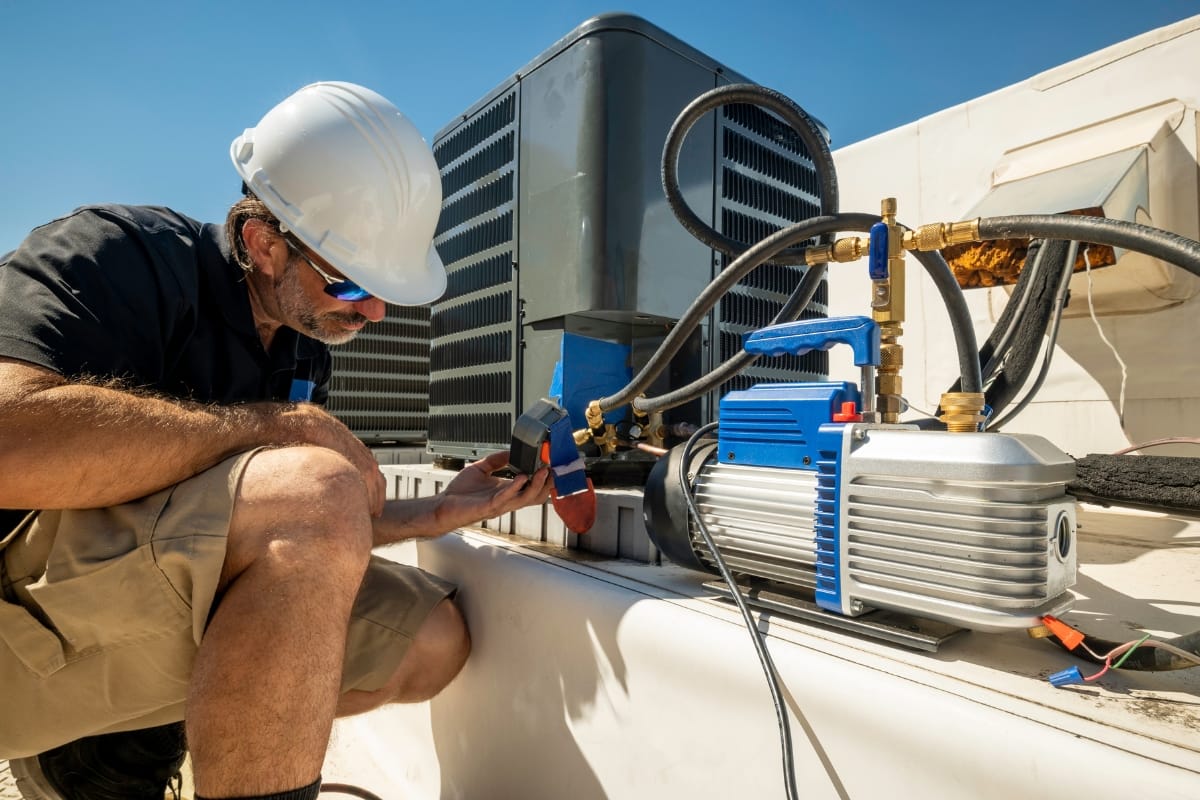
Installing HVAC systems in Woodstock requires a tailored approach to meet the different demands of homes and businesses. Each installation is shaped by factors like building layout, square footage, energy use, and local building codes. The goal is always the same: consistent comfort and reliable performance across seasons.
What Factors Influence HVAC System Selection for Homes vs. Businesses?
HVAC systems for homes and businesses serve different purposes and face different challenges. Residential systems often focus on keeping operating noise low and providing easy-to-manage temperature controls. Homeowners may look for added features like air filtration and zoning for individual rooms. Commercial systems, on the other hand, need to handle larger spaces and more variable usage patterns.
Office buildings, stores, and warehouses may have different heating and cooling needs depending on occupancy and time of day. System choices depend on square footage, insulation quality, the presence or absence of ductwork, and how the space will be used throughout the year.
How Are Installation Processes Designed for Maximum Comfort and Efficiency?
HVAC installations begin with a thorough inspection of the building. This includes checking insulation, existing ductwork, window placement, and other structural factors that affect airflow and temperature control. Load calculations help determine what type and size of system is needed.
During the installation itself, technicians position indoor and outdoor components in locations that support strong performance and help control noise. After setup, the system is tested to make sure it performs as expected. This includes checking for air leaks, confirming refrigerant levels, and reviewing thermostat response. A careful installation process leads to fewer problems down the line and better energy efficiency from the start.
What Customer Support and Communication Practices Ensure Satisfaction?
Good communication during and after installation is important for long-term satisfaction. Clear timelines, updates throughout the project, and thorough system walkthroughs help homeowners and business owners understand how their systems work. Some companies offer online tools that allow users to track system performance and receive maintenance alerts. Others follow up with reminders or seasonal check-ins. These practices help ensure the system continues to operate smoothly and give customers confidence in their long-term investment.
What Are Common Signs You Need Heating or Cooling Repairs in Woodstock?
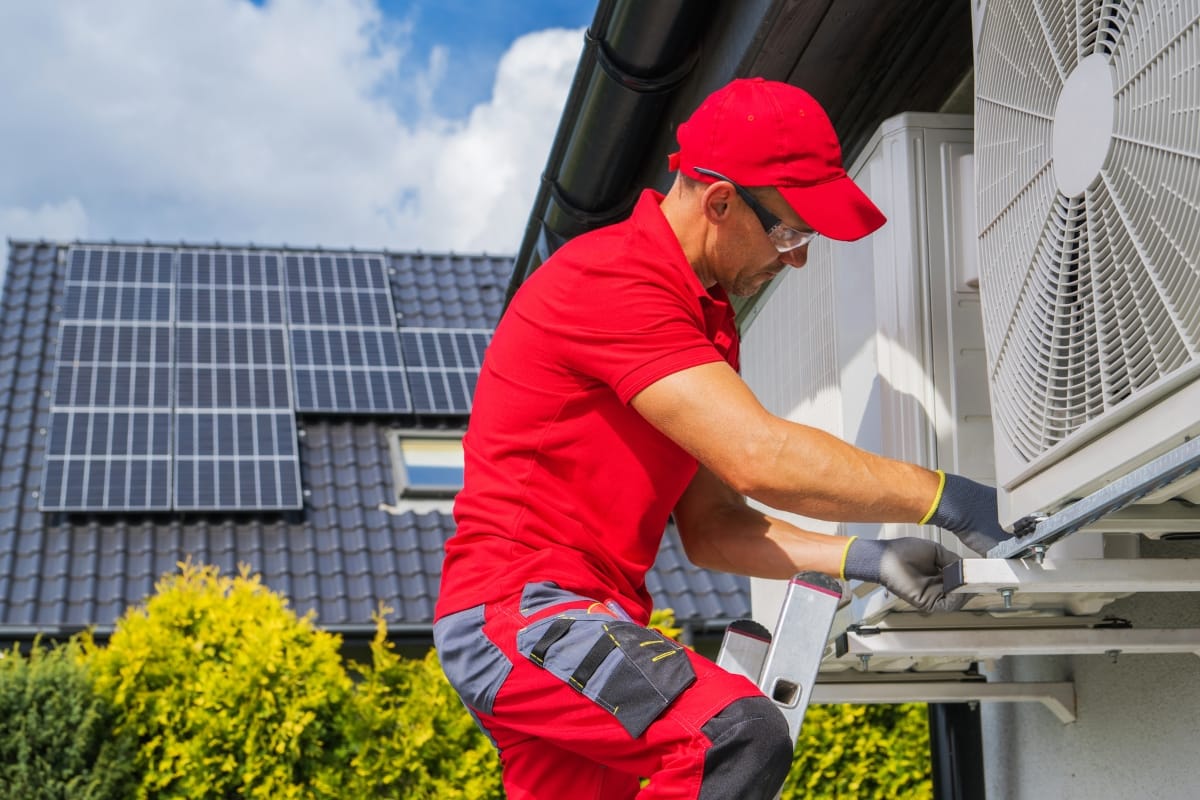
Catching heating or cooling issues early helps prevent bigger and more expensive problems. Some of the most common warning signs include odd sounds from your system, short or frequent cycling, reduced airflow, and sudden increases in your energy bill. These signs often point to underlying problems that, if addressed quickly, can save time, money, and discomfort.
How to Identify When Your Furnace or Heat Pump Needs Repair?
Furnaces and heat pumps usually give off a few key signs when something is wrong. If you hear clanging, rattling, or banging noises, or if the system starts and stops more often than usual, something may be off internally. A furnace that smells like it’s burning or shows signs of soot around the unit needs to be checked immediately. Heat pumps that struggle to heat properly may have refrigerant or compressor issues. Some problems may not be visible right away, but tools like pressure checks and temperature readings can help spot inefficiencies early.
What Are Warning Signs of Cooling System Malfunctions?
Cooling systems can also show signs of trouble before a complete failure. If your home cools unevenly or if the system is running longer without actually lowering the temperature, something may be wrong. Higher utility bills during the summer could mean your AC is working harder than it should. Buzzing or grinding noises can point to fan or motor issues. Moisture around the unit or poor humidity control inside may also suggest a blocked drain line or refrigerant leak. Taking action when these issues appear can prevent larger system failures later.
When Should You Contact Emergency HVAC Services?
Emergency HVAC repair is sometimes necessary, especially if the system shuts down completely or stops delivering any hot or cold air. Electrical problems, like constantly tripping breakers or burning smells, should never be ignored. In extreme heat or cold, a non-working system can quickly become a safety concern, especially for young children, older adults, or anyone with health issues. If your system starts acting unpredictably or you suspect a carbon monoxide issue, it’s critical to get professional help right away. A quick response can reduce the chance of long-term damage and get your home back to a safe, comfortable temperature.
How Does Woodstock’s Climate Impact All-Season Heating & Cooling Needs?
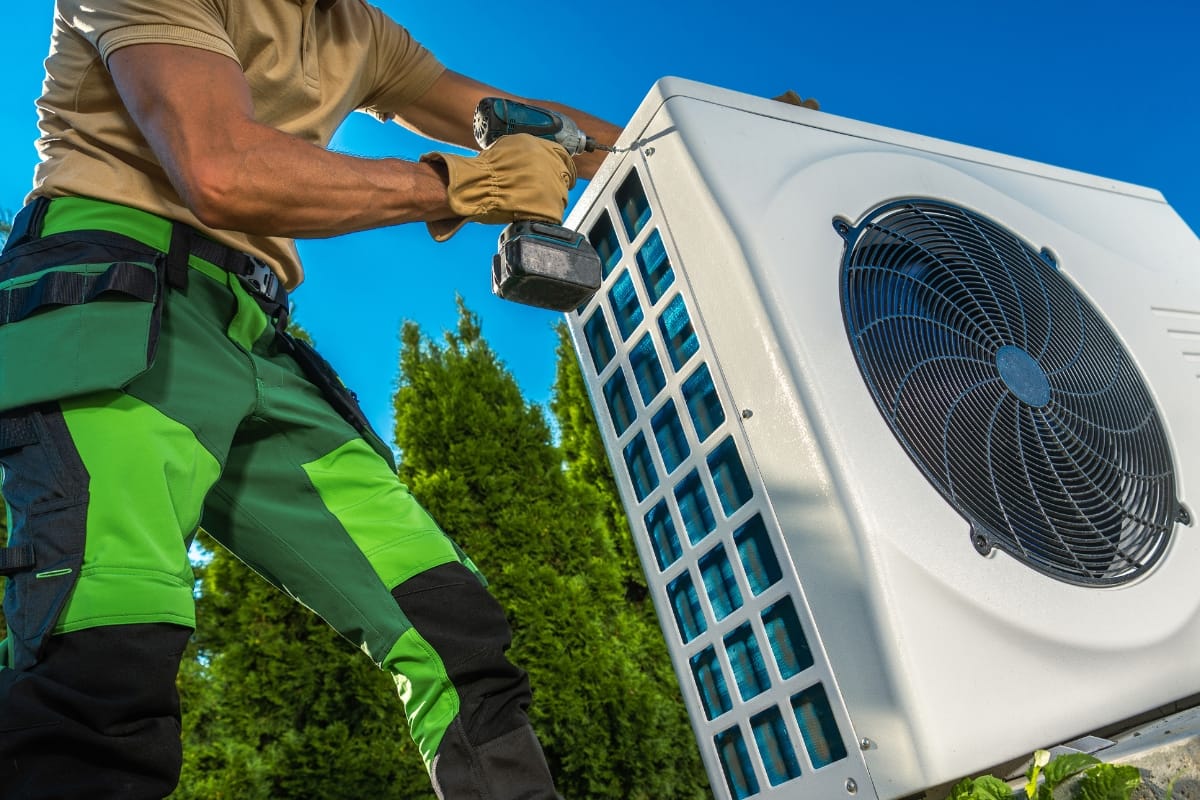
Living in Woodstock means dealing with weather that swings from chilly, damp winters to hot, humid summers. This kind of climate demands heating and cooling systems that can handle significant shifts in temperature and humidity without compromising comfort or efficiency.
What Weather Patterns Affect Heating Demand in Winter?
Winters in Woodstock can be unpredictable. While snow isn’t constant, the cold, wet conditions and sudden drops in temperature create a real need for consistent heating. Heat pumps, furnaces, and boilers all need to keep pace with the cold while dealing with factors like drafty windows, older insulation, and wind chill. Systems that are properly maintained and designed to adjust to shifting temperatures are better equipped to handle this kind of winter workload without driving up energy costs.
How Do Summer Temperatures Influence Cooling Requirements?
Summers in Woodstock are known for being both hot and humid. That combination makes air conditioning work harder, not just to cool the air, but also to remove moisture. When humidity levels stay high, homes can feel uncomfortable even when the temperature drops. Cooling systems like central AC units or ductless setups must be tuned to manage both heat and humidity efficiently. Systems that aren’t cleaned or serviced regularly may struggle to keep up during heat waves, leading to higher energy bills and uneven temperatures indoors.
How Can HVAC Systems Adapt to Seasonal Changes Efficiently?
The most effective HVAC systems are those that can respond in real time to changes in the environment. Whether it’s a sudden cold front in March or a humid heatwave in August, systems with variable-speed motors or multi-stage settings are designed to shift their output depending on current needs. Smart thermostats also help by learning your habits and adjusting settings automatically, keeping energy use low without sacrificing comfort. Seasonal check-ups, filter replacements, and keeping an eye on airflow are practical steps that help any system handle the changing demands of the year. When HVAC systems are tuned to the climate, they not only perform better but also last longer.
Frequently Asked Questions
Q: What is the typical lifespan of an all-season HVAC system in Woodstock? A: With proper maintenance, most all-season HVAC systems last between 15 to 20 years. Regular servicing and prompt repairs help extend system life and maintain reliable seasonal performance.
Q: How can I optimize my HVAC system’s performance during seasonal transitions? A: Regular filter changes, scheduled maintenance visits, accurate thermostat calibration, and smart HVAC solutions that adjust output based on real-time data are key to smooth seasonal transitions.
Q: Are heat pumps effective in extremely cold climates like Woodstock’s winters? A: Yes, modern heat pumps are designed to efficiently extract heat in sub-freezing temperatures. When paired with auxiliary heating and proper maintenance, they reliably provide comfort even in harsh winter conditions.
Q: What are the benefits of ductless mini-split systems compared to central air conditioners? A: Ductless mini-splits allow for individual zone control, reduce energy waste by cooling only occupied areas, and are easier to install in homes without existing ductwork. They also provide flexible, targeted comfort.
Q: How does regular maintenance impact energy efficiency? A: Regular maintenance, including cleaning and filter replacement, ensures peak system efficiency by preventing airflow blockages and identifying issues early. This helps reduce energy consumption and prolongs equipment life.
Q: Can I upgrade my existing HVAC system for better energy efficiency? A: Absolutely. Upgrading components such as thermostats, compressors, and filters can improve system efficiency. Professional assessments in Woodstock can identify areas for improvement to enhance comfort and lower energy costs.
Q: What financing options are available for new HVAC installations in Woodstock? A: Many local HVAC providers offer financing plans and flexible payment options to make upgrading or installing new energy-efficient systems more affordable, allowing homeowners to spread costs while benefiting immediately.
Final Thoughts
Whether you’re battling icy winters or scorching summers, having a reliable HVAC partner in Woodstock makes all the difference. CoolPro Heating & Cooling delivers tailored, all-season HVAC solutions—from precise heating tweaks to peak-performance cooling installs—so your home stays cozy and efficient every month of the year. Ready to experience year-round comfort without the hassle? Call CoolPro Heating & Cooling at 770-694-6232 or reach us through our site form today and let our experts create the perfect climate solution for your home.

